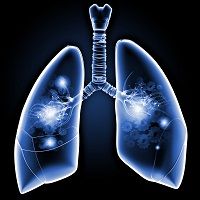Mysterious Childhood Autoimmune Disease Combines Lung Disease and Arthritis
Researchers have identified the single-gene mutations that cause a previously uncharacterized pediatric autoimmune syndrome that combines inflammatory arthritis and severe lung disease.

A childhood syndrome that has been identified links to lung disease and arthritis, according to findings published in Nature Genetics.
Researchers from the University of California San Francisco performed whole exome sequencing and targeted sequencing in 5 families, who had apparent medelian syndrome of autoimmunity characterized by high tier autoantibodies, inflammatory arthritis, and interstitial lung disease. The research was conducted in order to determine the molecular mechanisms in human cellular immunity and autoimmunity and add to the current literature on the subject.
“We believe that there are small molecules in development that can help correctly traffic the proteins that are misdirected in this syndrome, so that’s something we really want to go after,” explained Anthony K. Shum, MD, in a press release.
The researchers identified 4 unique delirious variants in the COPA gene, which effected the same functional domain, the authors explained.
“COPA mutations were completely unexpected,” Shum continued. “The COPA protein is expressed throughout the body, and no diseases associated with this gene had ever been reported.”
However, after conducting an independent genetic analysis, the researchers found the same result.
“You’ll usually see peaks spread across the genome, but we only got a single peak,” Shum said. “It was highly significant, and COPA was right under it.”
The COPA protein is heavily involved in intracellular transport, the authors added. The COPA mutations that the patients had hurt the protein and prevented the protein from completing its vital function. Then, the research team reached out to other physicians to identify other patients with the same cluster of symptoms to test them as well.
The mutation in the COPA proteins resulted in “cellular stress,” the researchers said, which in turn contributes to an autoimmune reaction mediated by Th17 cells, involved in rheumatoid arthritis and other arthritic diseases.
“In our current research we’re making sure that we have a clear mechanism, so we can come up with a potential drug target,” Shum said — he added that by targeting these cells, it may open up new ways to develop therapies for patients with this combination syndrome. “When I first contacted the families we located, it was a huge relief to them to know that there are other people like them and that someone is working on this disorder.”